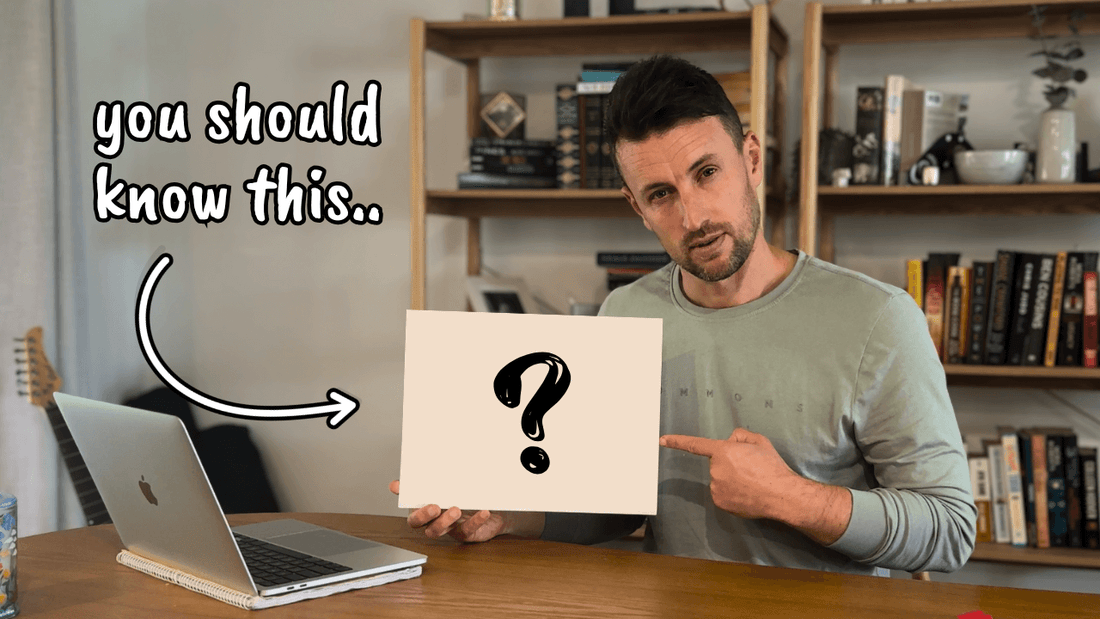
The Last Straw: Understanding the Real Cause of Pain
Have you ever developed a muscular ache, pain, or dysfunction and thought that was the start of your problem? What if that moment wasn’t actually the beginning - but the last straw?
The Last Straw Effect
Surprisingly, acute pain rarely begins at the moment you feel it. Instead, your body is likely to have been quietly accumulating stress and dysfunction over time. That final bend, lift, run, or even prolonged sit wasn’t the real cause - it was simply the last straw.
The Pain Graph: How Problems Build
Think of pain like a graph:
- Small daily stresses add up.
- Your body adapts and copes for a while.
- Eventually, one last event pushes it beyond the tipping point.
That’s when pain begins - but the true cause started long before.
Why Treating Pain Alone Isn’t Enough
Relieving symptoms may feel like recovery, but if you only chase the pain, the cycle can easily repeat. Real fixes require digging deeper:
- Was posture a factor?
- Where are your hidden restrictions?
- Were certain muscles weak or underused?
Unless you fix these root issues, pain is likely to return.
A Smarter Way to Recover
Pain is your body’s alarm system. Instead of just turning off the alarm, ask: Why did it go off in the first place? Effective Physiotherapy isn’t about masking pain - it’s about restoring normal function, building resilience, and preventing future flare-ups.
Key Takeaways
- Pain is usually the last straw, not the root cause.
- Symptoms appear when accumulated dysfunction exceeds your body’s limits.
- True recovery means treating the root cause, not just the pain itself.
Full Transcript
Read Full Transcript
Have you ever developed a muscular or skeletal ache, pain, or dysfunction and naturally felt that it was the start of your problem? What if I told you that a slight change in perspective may help you appreciate that the start of your dysfunction wasn’t actually the start—but the last straw? This slight change in perspective may help you better understand not only how to treat your ache, pain, or dysfunction, but also what you may need to do to get to the root underlying cause of that dysfunction.
Good day. My name is Grant Frost, and I’m an Australian musculoskeletal physiotherapist who is really passionate about trying to better understand the root causes of common aches, pains, injuries, and dysfunctions. Perhaps one of the biggest misconceptions I see regarding people's pain and the onset of their pain is that the moment you first notice it is actually the start of your pain—but it’s usually the last straw.
When creating content like this, I want to be very respectful of how you feel about your pain and what you feel may have caused it. But if you can keep an open mind for a moment, using a very simple example, I hope to change your perspective enough to give you more context. That extra context may help reveal what you may also need to do, aside from recovering from your pain, to make sure it never comes back again in the future.
As a physiotherapist who has treated tens of thousands of people over the last 20 years, there is a very good chance that there is more to your ache, pain, or dysfunction than you immediately realize, despite how obvious it may seem at the moment. And just to jump ahead a little, I want to ensure you that the concept we’re about to talk about applies just as much to the random onset of aches, pains, injuries, and dysfunctions that come out of nowhere as it does to acute trauma, accidents, hits, or falls. Please apply the same logic to those things, even if they feel like a rare, one-in-a-million moment.
What’s really important to appreciate here is a simple concept: imagine a graph with time along the bottom, dysfunction or overloaded tissue on the left, and a line representing pain. A common misconception is that you were perfect beforehand. This makes sense because most people don’t notice dysfunction until it occurs.
For example, if you got out of bed, coughed, sneezed, turned the wrong way, or did something that immediately caused pain, it’s logical to assume that action caused the pain. But if we take a step back, it’s very likely that you were already close to the pain threshold, and that cough, sneeze, or movement just pushed you over the line.
Pain usually develops gradually, often hidden and covert. We all start out “perfect”: tissue is loose, strong, and healthy. But as we exist in the modern world, posture often worsens, we sit too much, and we develop minor stiffness and dysfunction. Over time, this slowly moves us closer to the pain threshold. Some people may never reach this point due to tissue quality, lifestyle, or even luck. But for those who do, pain often appears suddenly, triggered by what seems like a small incident.
The trigger—coughing, sneezing, bending forward, twisting—is what many people mistakenly identify as the start of the problem. Age-related changes, overuse, growing pains, or accidents all contribute to this “last straw” moment. The moment you feel pain is often the final straw—the point at which your tissue can no longer tolerate the cumulative dysfunction.
If we only focus on treating the pain after it occurs, we’re merely addressing symptoms. For example, if you have lower back pain and do all the stretches, exercises, and treatments to relieve it, you might get under the pain threshold, but your tissue may not be fully restored. Pain relief does not necessarily mean perfect tissue—it means your brain and nervous system no longer perceive threat.
This is why it’s so important to figure out what caused the dysfunction in the first place—posture, prolonged sitting, hidden stiffness, previous injuries, and other factors. Addressing these issues helps move you further back from the pain threshold so that the next time you sneeze, bend awkwardly, or experience an accident, you are less likely to trigger pain again.
Even in accidents or sport-related incidents, most people are already somewhere near the threshold. The more robust your tissue going into a challenging moment, the less likely you are to be injured. If your tissue is already compromised, it takes less force to cause damage.
It’s important to reframe the onset of pain. Yes, you didn’t have pain until that moment. But it often takes days, weeks, months, or even years of accumulating dysfunction, stiffness, tightness, weakness, and poor postural loading to make you vulnerable. Then, simple triggers become the last straw.
While severe accidents can overwhelm even perfect tissue, most people’s problems arise from long-term, subtle factors. If you’re experiencing an ache, pain, or injury that you can’t fully explain, take a step back and consider what may have made you vulnerable. Addressing both the immediate pain and its underlying causes gives your tissue the best chance to recover fully and reduces the likelihood of recurrence.
Think about the issue you’re currently dealing with and what may have contributed to it. Often, the factors come from the modern world—poor footwear, prolonged sitting, posture, and everyday habits. By identifying and addressing these, you give yourself the best chance to prevent future problems.
I hope this perspective helps you better understand your aches, pains, and injuries. Please share in the comments what issue you’re currently dealing with and what you feel may have made you vulnerable. As always, if you found this helpful, leave a like, subscribe, or consider booking an online consultation for personalized guidance. Keep this concept in mind—it may change how you approach aches, pains, and injuries, and help prevent them from returning.
Next Steps
If you found this video helpful, here’s what to do next:
- Can Swearing Improve Your Pain Experience? Here's What the Research Says!
- Book an Online Physio Consultation
- Subscribe to the Your Wellness Nerd YouTube Channel for more insights on pain, injury, and recovery
